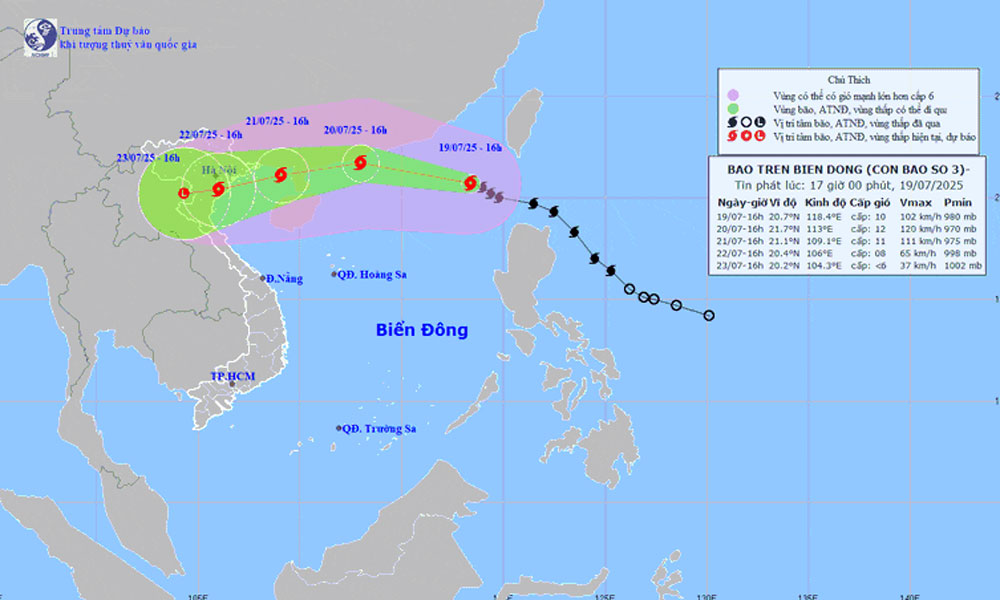Close monitoring and timely response to Typhoon Wipha
On July 19, the Prime Minister issued Telegram No. 112/CD-TTg, directing ministries, sectors, and localities to focus efforts on responding to Storm No. 3 (Typhoon Wipha), which has entered the East Sea (South China Sea), bringing heavy rainfall and posing risks of flash floods, landslides, and inundation.
The Prime Minister instructed Chairpersons of the People's Committees in affected localities to closely monitor the storm’s developments; direct and implement the inspection, counting, and guidance to ensure the safety of all vessels, including fishing boats and tourist boats, operating at sea or along coastal areas, so they can proactively leave dangerous zones or take shelter safely.
 |
|
Photo for illustration. |
Forces and equipment must be prepared to carry out search and rescue operations when needed. Timely information on rainfall and storm conditions must be provided to residents, and evacuation plans for households in high-risk areas; particularly coastal zones, landslide-prone areas, and locations facing deep flooding; must be reviewed and ready to ensure safe relocation.
The Prime Minister tasked the Minister of Agriculture and Environment with closely tracking forecasts and warnings, and promptly communicating storm, rain, and disaster updates to relevant authorities and the public.
The ministry is asked to actively direct sectors and localities to carry out disaster prevention and control according to assigned functions, with particular attention to the safety of dykes, irrigation reservoirs, and measures to minimise damage to agricultural production.
The Ministers of National Defence and Public Security instruct military regions and stationed forces to review plans and ready personnel and equipment to support residents in storm and flood response, as well as search and rescue operations.
Media agencies are asked to promptly report on disaster developments and the directives of relevant authorities, while intensifying the dissemination and guidance of response measures, skills, and knowledge on coping with storms, heavy rainfall, floods, landslides, and flash floods to the public.
 Bắc Ninh
Bắc Ninh













Reader's comments (0)